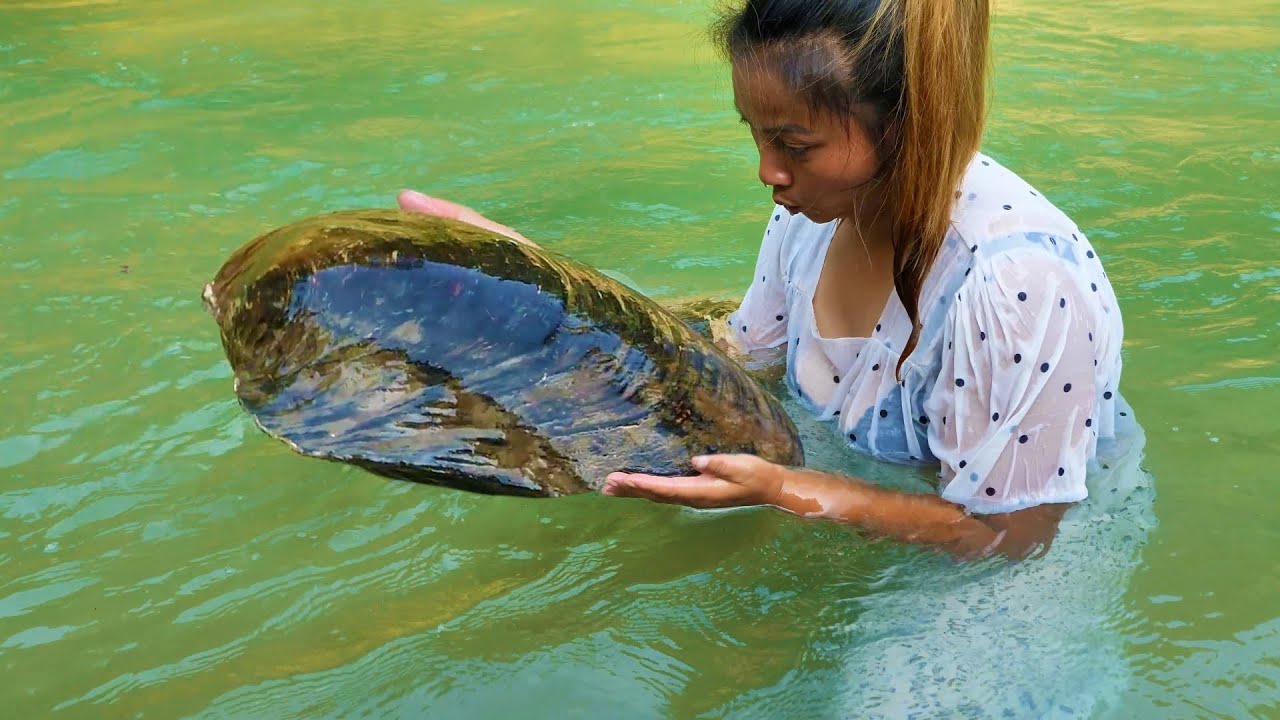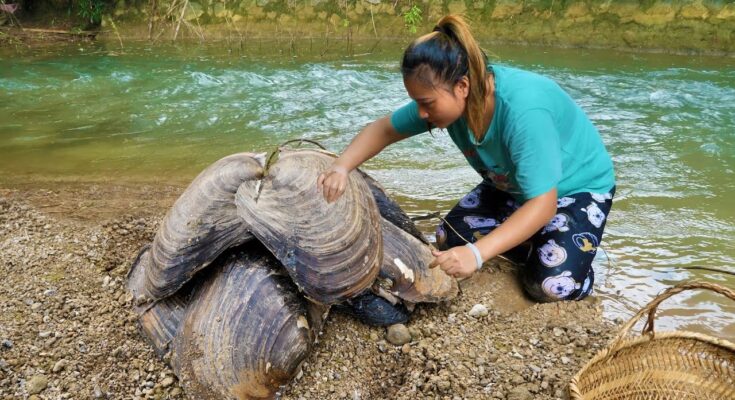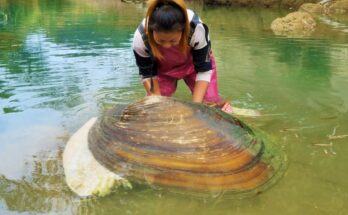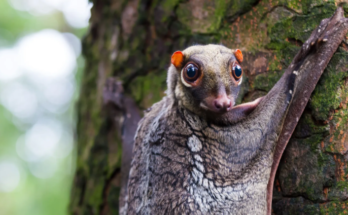Twenty-three-year-old Lin Mei, affectionately known as the “Pearl Princess” by locals and her growing online fanbase, claims pearls every day from the sea and earns a consistent $200 daily by selling them. Her story is not just a tale of natural beauty and ocean treasures, but also one of resilience, entrepreneurship, and modern innovation rooted in ancient tradition.

A Day in the Life of Lin Mei
Every morning at dawn, Lin Mei prepares her small wooden boat and sets off into the misty waters of the South China Sea. Clad in a wetsuit, with her long black hair tied in a knot, she navigates to a secret cluster of oyster beds that her family has tended for generations. With the grace and skill of a seasoned diver, she plunges into the cool waters, collecting oysters by hand from the sea floor.

By noon, Lin returns to the shore with dozens of oysters in her catch. After carefully prying them open, she reveals her daily haul—natural pearls ranging in color from ivory white to deep violet, each with its own unique luster and size. These treasures of the sea are then cleaned, graded, and sorted for sale.
“I was raised by the sea,” Lin says. “My mother taught me how to dive when I was just a little girl. We don’t use machines or big farms—everything is done by hand, with respect for nature.”
Pearl diving is an age-old tradition in Lin’s village. Her grandmother was a famed pearl harvester in the 1960s, and the family has kept the practice alive through the generations. While many in the region have turned to modern aquaculture farms or abandoned the trade entirely, Lin chose to embrace the traditional method—partly out of heritage, but also because it offers her a niche in today’s booming online jewelry market.
“My grandmother used to say that each pearl has a soul,” Lin shares. “You can feel it when you hold one. No two are ever alike.”
This personal connection to her craft is what sets Lin apart—and it’s what draws customers from across China and even abroad.
Lin Mei isn’t just a diver—she’s a savvy businesswoman. She runs a livestream every evening on Douyin (the Chinese version of TikTok), where she opens oysters live on camera, reveals pearls in real time, and offers them for sale to viewers. Her enthusiastic personality, authentic background, and visually satisfying content have garnered her a loyal following.
“I started doing livestreams during the pandemic, when local markets were closed,” she recalls. “I didn’t expect people to love it so much.”
With more than 100,000 followers, Lin typically sells out her stock within hours. On average, she sells enough pearls to earn about $200 per day, sometimes more on weekends or holidays.
Each pearl is priced according to its size, shape, color, and surface quality. While smaller, irregular pearls sell for around $10 to $20, larger ones or those with rare hues can fetch $100 or more each.
She packages each pearl with a handwritten thank-you note and a short description of its origin. “People love knowing where their pearls come from,” she says. “It’s more than jewelry—it’s a story.”
In an industry often criticized for overharvesting and pollution, Lin Mei practices what she calls “slow harvesting.” She only collects mature oysters and rotates her dive sites to give beds time to regenerate. She also participates in local conservation programs aimed at preserving marine ecosystems and educating younger generations about sustainable practices.
“I want to make sure my children and their children can still do this one day,” she says.
Her approach has drawn praise from environmental groups and earned her a small feature in a Chinese eco-documentary, further boosting her popularity.
Despite the glamour of pearls and the serenity of the sea, Lin Mei’s work is not without hardship. The physical demands of daily diving are intense, requiring strength, stamina, and strong lungs. There are also risks from jellyfish stings, sharp oyster shells, and unpredictable weather.
“There are days when I come back with cuts all over my hands,” she admits. “But it’s worth it. The ocean gives me peace.”
And then there are the business challenges—balancing production, customer service, marketing, and fulfillment, all while maintaining a consistent quality of product. But Lin embraces these hurdles as part of her journey.
“You can’t grow pearls in a day,” she says with a laugh. “It takes time, patience, and care—just like growing a business.”
As her business grows, Lin dreams of opening a small boutique in a nearby city, where customers can come see the pearls in person and learn about the traditional methods behind them. She also plans to launch a website with international shipping, making her products accessible to customers worldwide.
“I want people to see that beauty doesn’t come from big factories,” she says. “It comes from nature, tradition, and a little bit of love.”
She’s also mentoring younger women in her village, teaching them how to dive, harvest, and start their own small businesses. “If I can do it, they can too,” she says proudly.
Lin Mei’s story has resonated across China not just because of the rarity of her work, but because of what it represents: a harmonious blend of old and new, of tradition and innovation. In a rapidly modernizing society, she reminds people of the value in slowing down, connecting with nature, and building something meaningful from the ground up.
Her $200 daily profit might not sound astronomical in the age of tech billionaires and e-commerce giants, but in her coastal village, it’s more than enough to live well—and more importantly, to live free.
“I don’t need to be rich,” Lin says. “I just need the sea, my pearls, and a purpose.”



